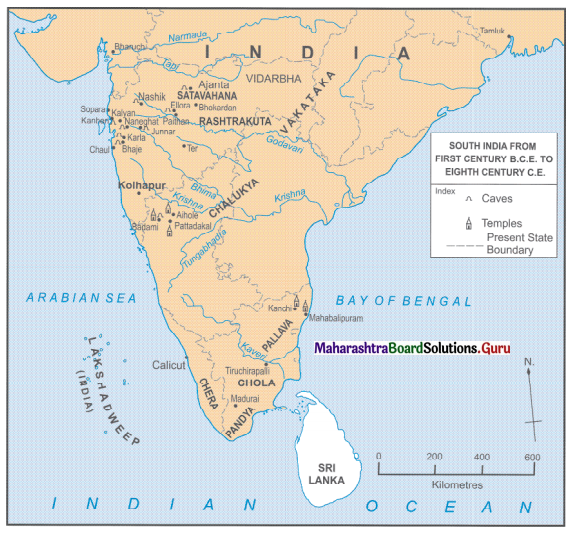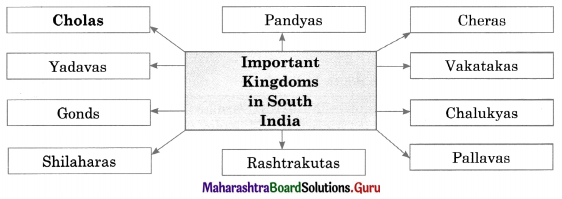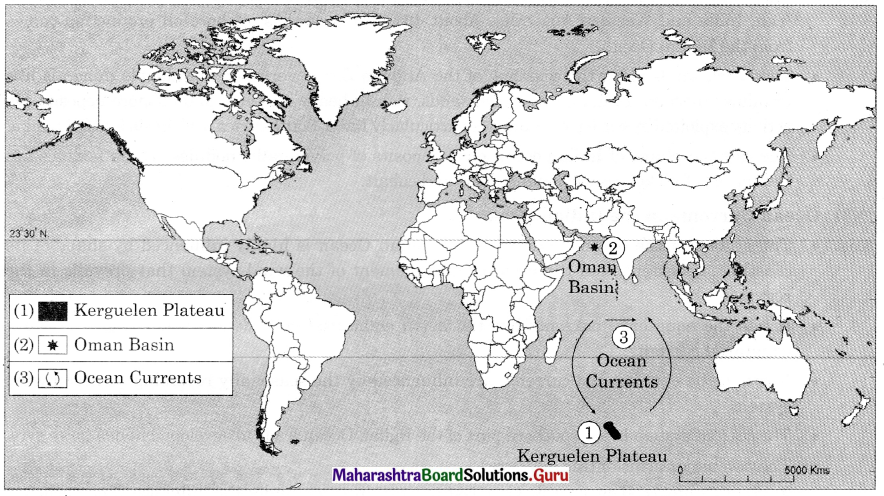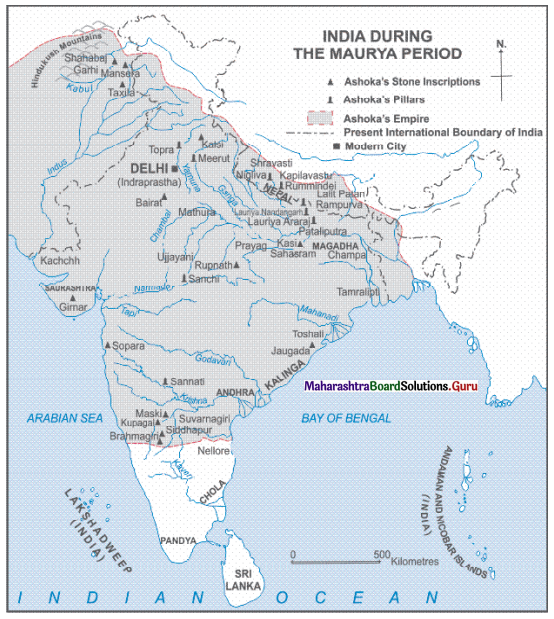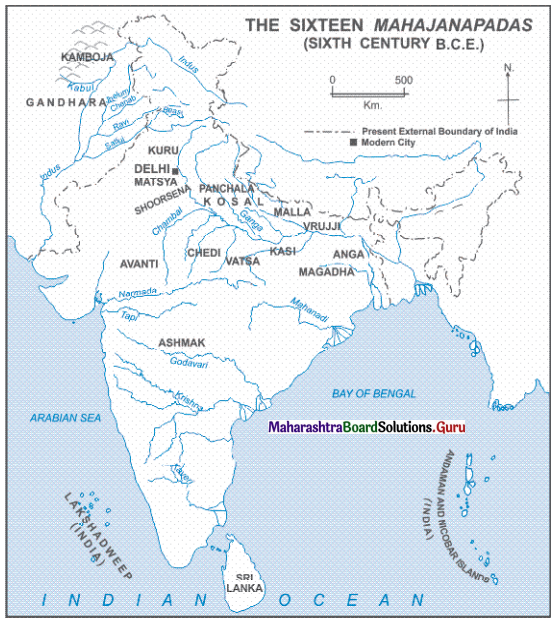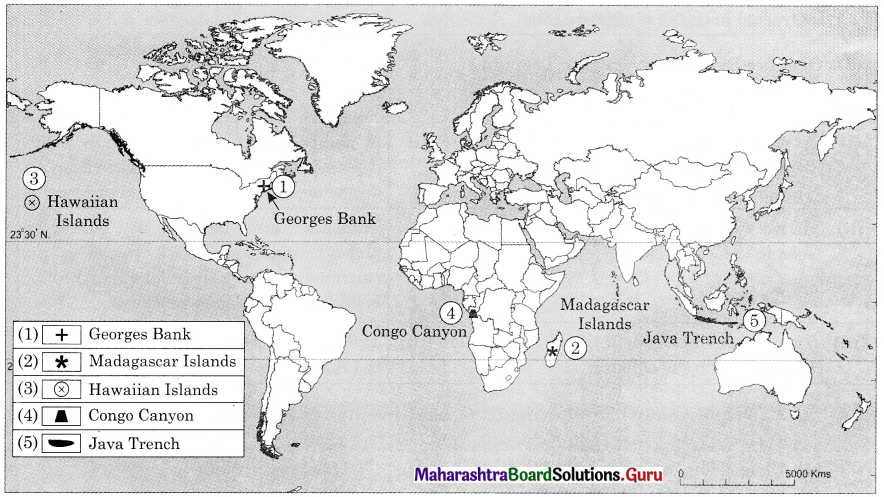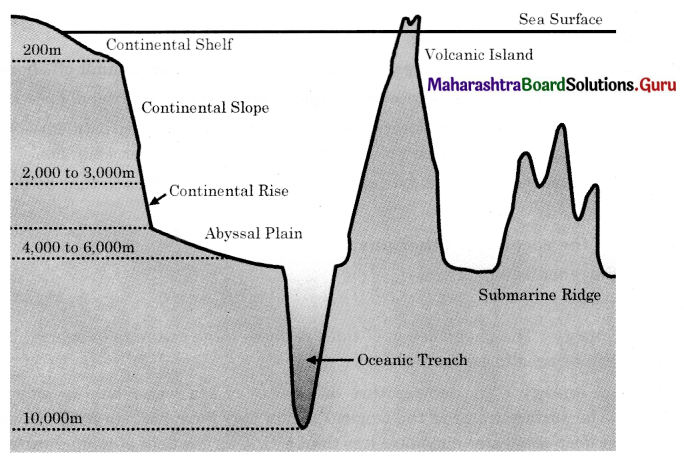Balbharti Maharashtra State Board Class 11 History Important Questions Chapter 12 India, Nations in the Northwest of the Indian Subcontinent and China Important Questions and Answers.
Maharashtra State Board 11th History Important Questions Chapter 12 India, Nations in the Northwest of the Indian Subcontinent and China
1A. Choose the correct alternative and write the complete sentences.
Question 1.
___________ a port city is mentioned in the ‘Old Testament’.
(a) Ophir
(b) Lothal
(c) Meluhha
(d) Bet Dwaraka
Answer:
(a) Ophir
Question 2.
___________ trained by sailors to reach the coast safely were called ‘Dishakak’.
(a) Sparrows
(b) Crows
(c) Kingfishers
(d) Pigeons
Answer:
(b) Crows
![]()
Question 3.
___________ is identified with Babylon.
(a) Nangarhar
(b) Gandhara
(c) Kandahar
(d) Baveru
Answer:
(d) Baveru
1B. Find the incorrect pair from set B and write the correct ones.
Question 1.
| Set ‘A’ | Set ‘B’ |
| (a) Geographia | Strabo |
| (b) Naturalis Historia | Yavana |
| (c) Geographia | Claudius Ptolemy |
| (d) Indica | Arrian |
Answer:
(b) Naturalis Historia – Pliny the Elder
Question 2.
| Set ‘A’ | Set ‘B’ |
| (a) Purushspur | Peshawar |
| (b) Ancient Kapisha | Begram |
| (c) Bhokardan | Bhogvardhan |
| (d) Theravada | Kansu |
Answer:
(d) Theravada – Hinayana
1C. Find the odd one out.
Question 1.
Spread of Indian culture:
(a) Afghanistan
(b) China
(c) Rome
(d) Japan
Answer:
(c) Rome
Question 2.
Indian trade with distant lands:
(a) Kathasaritsagara
(b) Bhokarda
(c) Deepvamsa
(d) Mahavamsa
Answer:
(b) Bhokarda
![]()
Question 3.
Greek Literature:
(a) Geographia
(b) Naturalis Historia
(c) Indica
(d) Periplus of Erythrean Sea
Answer:
(d) Periplus of Erythrean Sea
Question 4.
Trading centers in Jalana district:
(a) Paithan
(b) Ter
(c) Gandhara
(d) Bhokardan
Answer:
(c) Gandhara
2. Write the names of historical places, persons, and events.
Question 1.
Port city is mentioned in the ‘Old Testament’ (Bible).
Answer:
Ophir
Question 2.
The Latin name of Periplus of the Erythrean Sea.
Answer:
Periplus Maris Erythraei
Question 3.
Greek mathematician geographer, author of Geographia.
Answer:
Claudius Ptolemy
Question 4.
Famous statues of Buddha away from Kabul.
Answer:
Bamiyan statues
Question 5.
The route that links Asia and Europe.
Answer:
Silk Route
![]()
Question 6.
First Buddhist temple built in China
Answer:
White Horse Temple
Question 7.
Caves are located on the ancient Silk Route.
Answer:
Mogao Caves
Question 8.
The grandson of Genghis Khan had a great interest in Buddhism.
Answer:
Kubalai
3. Complete the concept maps.
Question 1.

Answer:

Question 2.

Answer:

![]()
4. State your opinion.
Question 1.
The spread of Buddhism in China introduced a new trend in Chinese art.
Answer:
- Many of the Buddhism monks who arrived in China hailed from central Asia.
- Their presence in China inspired the making of images of Gautama Buddha and Bodhisattvas.
- This art style that originated in the Xinjiang province is known as ‘Serendian Art Style’ (Seres meaning China + India)
5. Answer the following questions in detail.
Question 1.
Write a note on India’s relations with Afghanistan during Emperor Ashoka’s period.
Answer:
- Emperor Ashoka’s period 13th edict is the names of Greek kings, who were his contemporaries.
- People in their kingdoms were following the path of morality as outlined in his message of Dhammavijaya. Among these kingdoms was the kingdom of Kamboja in Afghanistan.
- The Ashokan edict at Kandahar is in Greek language and the script used for it is Aramaic.
- This inscription shows that Afghanistan was an integral part of Ashoka’s empire.
- Ashoka had sent ‘Thera Mahyantika’ (Majjhantika) to Kashmir and Afghanistan and ‘Thera Maharakkhita’ to the Greek (Yona) kingdoms, for spreading the teachings of Gautama Buddha.
Question 2.
Write in detail about Kushana Period.
Answer:
- In the Kushana period, Buddhism reached China by this trade route. Some of the coins of emperor Kanishka carry the image of Gautama Buddha. It also has a legend that reads, ‘Boddo’.
- This is the oldest representation of Gautama Buddha in an image form on a coin.
- The Chinese monks like Fa-Hien, Yuan Chwang, who travelled through India have described the Buddhist viharas and stupas in India.
- There are numerous remains of viharas and stupas in Afghanistan.
- Among them, a place called ‘Shahji-ki-Dheri’ near Peshawar in Pakistan was excavated.
- The importance of the stupa discovered at this place is underlined by the fact that it was built during Kanishka’s period.
6. Answers the following questions with the help of given points.
Question 1.
Write about the relations between India and Rome.
(a) Literature (Source of Information)
(b) Trade relations
Answer:
(a) Literature (Source of Information):
- A Sailor’s handbook of his sea travels is known as ‘Periplus of Erythrean Sea’ (Latin name: Periplus Maris Erythraei).
- The ancient cities like Bharuch, Sopara, Kalyan, etc., are mentioned in this periplus.
- There are other texts ‘Geographia’ written by the Greek mathematician-geographer Claudius Ptolemy, Tndica’
![]()
(b) Trade relations:
- The Indo-Roman trade had begun to grow. The silk route and the ports on the south and west coasts of India played a vital role in this trade.
- The records of the Greek historians mention a group of merchants, who paid a visit to the court of the Roman Emperor Augustus.
- The coin hoards found in Tamil Nadu had Roman gold coins in them, but they were valued for their gold.
- Nero, the Roman emperor had paid one million gold coins for a single chalice of emerald of Indian made.
- Pliny the elder had expressed concern about that the drain of gold from Rome into India.
- Strabo tells us that animals such as snakes, hunting dogs, tigers, elephants, birds like parrots and peacocks, things like hides and horns of rhinoceros, expensive textiles, pearls, ivory, and spices, etc. from India were in great demand.
- Apart from the Roman gold coins, many other things like lead, zinc, corals, wines, olive oil were the Roman imports coming to India.
- Cities like Paithan, Ter, Kolhapur, Bhokardan in the Jalana district were important trading centers.














